How Long Does It Take to Master a Martial Arts
How long does information technology take to master a martial fine art?
Before yous inquire this, explain what you mean by "master" a martial art. How exactly would you lot be able to tell if someone has mastered a martial art? What are some indicators?
Unless you have a articulate idea, all y'all take is the starting point – the day a person begins preparation. Without the end (the day mastery is reached), computing the fourth dimension needed for mastery is incommunicable.
This explains the structure of this article below. We first explore measures that can betoken a person's mastery in martial arts, so employ those measures to calculate the fourth dimension needed on boilerplate.
Challenges in defining what mastery means
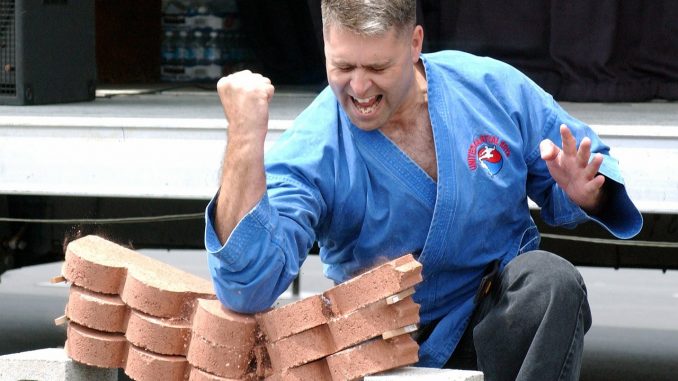
There are a few challenges when defining mastery. Here are 2.
Challenge 1: Mastering a martial fine art mean dissimilar things for different people
I, different people have different ideas about what information technology means to chief a martial art.
Some believe a first-degree black belt is an accurate measure of mastery (here'southward why it's non). Others insist that mastery is an abstract concept that cannot be divers.
With differences in interpretation, you lot will never become a consistent answer.
Claiming 2: Unrealistic thought of what mastery means
Two, many people consider mastery an abstract concept. They believe that mastering a martial art means having absolute cognition and impeccable skill execution. There can be Cipher room for flaws.
 Since no one e'er attains perfection, they assert that no one can truly main a martial art. The definition they utilize for mastery is but incommunicable to attain.
Since no one e'er attains perfection, they assert that no one can truly main a martial art. The definition they utilize for mastery is but incommunicable to attain.
That is why the typical answers you get past asking: "how long does it take to master a martial art?" are:
- "It takes a lifetime"
- "You are always a beginner"
No shit, Sherlock! That's an obvious and lazy answer, based on an unrealistic definition of mastery.
Think almost information technology. Since perfect mastery cannot exist reached even later on death, it makes whatsoever give-and-take most this pointless. It is like bantering about fantasy – things that volition never happen.
But both you and I know that people who want an objective timeframe for mastery aren't talking about some abstruse concept. No one asks a question with the intention of receiving vague answers.
And and so, the adjacent section defines some criteria of martial fine art mastery. It takes the topic of mastery into the objective realm, and then that a discussion beyond vague answers tin can take identify.
How would you know if a person has mastered a martial art?
While y'all can't directly measure mastery in martial arts, you can look at some objective approximation for it.
After all, you can tell apart a master instructor, teacher, senior and layman. Existence able to do so ways yous already have a rough idea of the attributes that define a master.
For example, many martial artists accept acknowledged Jigoro Kano, Masutatsu Oyama and Morihei Ueshiba as masters, based on their skill and contributions to the martial world.
So, let'due south clarify the definition of mastery.
Mastery is non Absolute, there are different evolutions
Mastering a martial fine art but means you are far beyond excellent at information technology. Nevertheless, among masters, in that location are still dissimilar levels. At dissimilar points in time, a master's level of mastery has nuances.
Take Morihei Ueshiba as an example.

Although there was a specific point in time when he mastered Aikijujutsu, he never stopped refining his skills.
The amalgamation of his martial arts training brought well-nigh Aikido. Even then, the style of Aikido experienced by his early students and afterward students had stark differences. It evolved with his life's experiences.
This suggests that mastery has varying levels, and has some form of development.
It is no unlike from the nuanced differences betwixt a white belt and blue belt. Both are considered layman, but one is of a college level than the other. One has had slightly more experience to evolve their skill and agreement.
Evolving mastery involves mastering life'due south challenges
The point here is – mastery is non the absolute final destination. There are things to refine based on how an private progresses in life.
Consider this…
- As a person becomes older, he has to adapt his skills. Does that accommodation to old age mean that he hasn't mastered his art?
- If a 6th-degree black belt loses her arm, does adapting to her injury mean she hasn't truly mastered her martial art?
- When a person's life philosophy changes, does refining his techniques to suit his views hateful he hasn't truly mastered his art?
This is the evolution in mastery that I'm talking almost.
So, refinements in mastery does not mean mastery does non exist
You can truly principal the entire syllabus in a finite corporeality of time. Simply trying to fit the definition of mastery to the changes in life, and saying it falls short is fallacious.
Therefore, these nuances mean that mastery can be separated into different levels of refinement. Instead of taking mastery as absolute perfection, see information technology as a piece of work-in-progress. Admit that it includes varying levels of mastery that can spark martial evolution.
With this in mind, let'due south define mastery and accept a expect at some measures. Nosotros ultimately need only identify the everyman benchmark for existence a martial art master, to get the calculations done.
Measures that bespeak martial art mastery
Martial fine art mastery is a combination of proven skill and acknowledgement by other experts. Information technology is at least one form above beingness an instructor.

For simplicity, we refer to the study 'A way to mastery. Mastery in martial arts'. It already uses some measures as an approximation for mastery:
- Founding of a well-regarded style of martial fine art
- Being awarded the rank of tenth-caste black chugalug
- Attaining the menkyo kaiden license
- Attaining an instructor's license (Shogo Organization)
I've also added this measure:
- Black belt degree that qualifies for: renshi, sa bum nim or shihan title
Allow'due south explore the measures in detail, and find out why I added the terminal one…
The 5 Measures of Martial Art Mastery
These are the five measures of mastery.
- Establishing a Respected New Style/Martial Art Schoolhouse
- Attaining 10th-degree Black Belt (and similar)
- Menkyo Kaiden License
- Instructor Titles (Japanese Shogo 称号 System)
- Black Belt Degree Equivalent to Renshi (錬士) & Sa Bum Nim (사범님)
Click on a specific measure above to skip the other sections.
ane
Establishing a Respected New Style/Martial Art School
ane
Establishing a Respected New Style/Martial Art School
To found a new martial art way or school that is well-respected, the founder needs to possess high technical proficiency in and deep understanding of their martial art. This puts them at a higher level than the average instructor.
Hence, being a founder is a expert measure of martial art mastery, except for one event. Whatsoever charlatan tin create their ain martial art while existence utterly incompetent.
To counter that, we need to assess other measures.
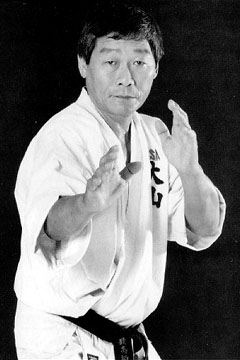
For instance, does the founder possess a senior black-chugalug caste or menkyo kaiden license in another martial fine art?
That would ostend that (s)he has proven skill.
Likewise, if a founder's style is best-selling by other reputable martial artists, (s)he is unlikely to be incompetent.
Famous Founders of Modern Martial Arts
The study, 'A way to mastery. Mastery in martial arts', included these founders. They were (and still are) widely recognized by their predecessors, peers and successors.
In add-on, these masters possess at to the lowest degree one of the iii: (1) a high level license in a koryu martial art, (2) blackness-belt degree in a modern martial art, or (3) both.
| Proper name | Years of training before establishing style | Style founded |
|---|---|---|
| Choi Hong Hi | 20 | Taekwondo |
| Masutatsu Oyama | 25 | Kyokushin Karate |
| Shigeru Oyama | 39 | Oyama Karate |
| Morihei Ueshiba | 46* | Aikido |
*I can't tally the calculation for Morihei Ueshiba. However, the number of years is plausible if the study calculates Aikido'southward founding appointment as the day Aikibudo was renamed as Aikido in 1942.
How long does information technology take to master a martial art? – (Founder ofNew School/Style)
So, if we were to use this measure, how long does it take to master a martial fine art?
Co-ordinate to the written report…
| Asia | Outside Asia | |
|---|---|---|
| Years trained before setting up schoolhouse | Boilerplate 33.2 (ranges from xx to 46) | Average 29.ane years (ranges from 1 to 54) |
| Form earlier setting upwardly school | Average 5th/6th dan (ranges from 2nd to eighth, or menkyo license) | Average fifth/sixth dan (ranges from 1st to tenth) |
Dorsum to the listing of five measures
two
Attaining Tenth-caste Black Belt (and like)
two
Attaining Tenth-caste Black Belt (and like)
The 10th-degree black belt is generally regarded equally the highest possible qualification in several martial arts. The study uses this mensurate to point confirmed mastery – the highest level of refinement.
People awarded the tenth-dan (black belt)
| Proper name | Years of Continuous Preparation | Martial Art |
|---|---|---|
| Richard Kim | 77 | Karate |
| Yuchoku Higa | seventy | Karate |
| Siegfried Lory | 44 | Jujutsu |
| Keiji Tose | 39 | Iaido |
| Jon Bluming | xl | Karate |
Bug with using the 10th dan equally a Mensurate
There are several issues with using tenth dan equally an approximation for mastery.
- Not all martial arts have a 10th dan; some styles like Aikido nearly never award that rank
- Some martial arts accept grades beyond 10th dan
- The tenth dan is oft awarded for non-technical contributions (i.east. how well as main proliferates the martial art)
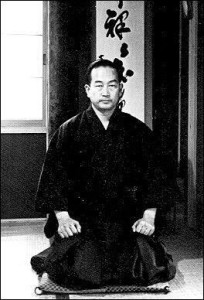
Nakayama Masatoshi – awarded 10th dan posthumously. Paradigm via Asai Shotokan Clan - In some organisations, it is reserved but for chief instructors or founder
- In several cases, it is awarded posthumously, after a principal has passed away
This is why a number of martial art instructors have argued against having dan-ranks across the get-go few. Likewise, the tenth-degree black chugalug is an overkill mensurate to signify mastery in a martial art.
That said, despite the problems, it confirms mastery with a higher degree of certainty.
How long does information technology take to master a martial fine art? – (10th-dan)
So, how long does information technology take to principal a martial fine art, confirmed by a tenth-degree black chugalug?
According to 'A way to mastery. Mastery in martial arts', to reach mastery confirmed past existence awarded the 10th-degree black belt, it takes between 30 and 70 years of continuous grooming. The tabular array below shows the differences between Asia and other countries.
| Asia | Exterior Asia | |
|---|---|---|
| Years of continuous exercise | Boilerplate 55 years (ranges from 39 to 77) | Average 42.eight years (ranges from thirty to 55) |
Back to the listing of five measures
The Menkyo Kaiden is both a didactics license for and certification of loftier technical proficiency in the unabridged syllabus. It is the koryu martial art equivalent of tenth-dan.
The problem with the license is that an analogical version of menkyo kaiden can be awarded prematurely. This ways such a license holder may neither accept completed the syllabus nor demonstrated full proficiency.
This happens for a few reasons, such as:
- The license is given to a foreign pupil, so that most of the martial art tin can be transmitted to people of another country.
- The student is teaching on behalf of the master, and still takes direction from the master (menkyo kaiden is a legal license to teach a particular koryu martial art)
In either cases, (most of the time) the menkyo kaiden holder is sufficiently competent. Nonetheless, information technology is important to combine this measure with other measures.
People with Menkyo Kaiden in a Koryu Martial Art
| Proper noun | Martial Art | Age awarded |
|---|---|---|
| Risuke Otake | Tenshinshoden Katori Shinto-ryu | Gokui Kaiden at 42 |
| Yoshio Sugino | Tenshinshoden Katori Shinto-ryu | Menkyo Kaiden at 35 |
| Fumon Tanaka | Enshin-ryu Kobudo | Gokui Kaiden at 32 |
The ages for receiving menkyo kaiden is relatively immature, unlike the tenth-caste black belt. This is because most Japanese people from samurai families (who transmit a koryu martial art) begin training at the age of half dozen.
And then, in my opinion, a person awarded menkyo kaiden tin be considered a low to mid-level master. Years later, the person's mastery level would naturally have refined to a higher level.
How long does information technology take to primary a martial art? – (Menkyo Kaiden license)
Co-ordinate to 'A way to mastery. Mastery in martial arts', the boilerplate time to receive a menkyo kaiden license is between 12 and 30 years.
Back to the list of five measures
4
Teacher Titles (Japanese Shogo 称号 System)
4
Teacher Titles (Japanese Shogo 称号 System)
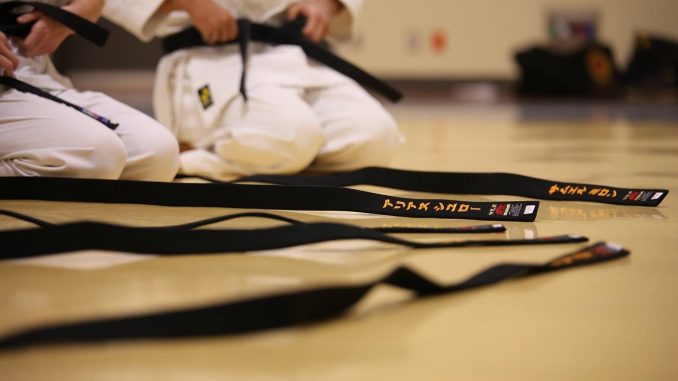
Where the dan system ranks technical proficiency, the shogo (称号) organization is a teaching title system for modern Japanese martial arts. It indicates a person'southward instructor rank.
Especially in Japan (depending on the martial art), possessing an advanced blackness belt caste doesn't necessarily make a person an instructor. Information technology is the shogo system that deals with instructor titles, which are more often than not more hard to obtain.
That said, not all martial arts use the shogo system. Some styles and dojos just utilise a different procedure to appoint instructors. And it varies in dissimilar organisations and dojos.
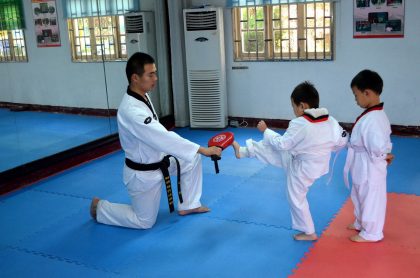
For instance, they may take a less formal procedure to engage instructors, and fifty-fifty use the title ofshihan to recognise master instructors. Theshihan championship takes many years to achieve and sometimes comes with the power to give out ranks.
Take a look at this resources (by Total Self Defence) to understand the shogo system and shihan title in detail. As for a historical timeline on the dan and shogo system, check out kenshi 24/7 and Michael Faulk's explantion.
Titles in the Shogo System
The following tabular array is simply a general example. Non all organisations use these specific criteria, and there are exceptions. Nevertheless, most all organisations require a minimum of fifth-dan to confer the renshi title.
| Championship | Minimum Blackness Chugalug Degree | Minimum Historic period (Years) |
|---|---|---|
| Hanshi – 範士 | 9 to ten dan | higher up 54 |
| Kyoshi – 教士 | 7 to 8 dan | higher up 39 (demand to hold the Renshi championship for at least 10 years previously) |
| Renshi – 錬士* | 5 to 6 dan | to a higher place 34 (need to hold 5th dan for at least 2 years) |
Source: Black Belt Ranks and Titles
Korean martial arts
Since the shogo organization is from Japan, Korean martial arts practice non employ it. Instead they use something similar.
The below table shows a like system used by WTF and Kukiwon Taekwondo. As shown, martial artists with at least a fourth dan are considered masters.
| Dan | Remarks | |
|---|---|---|
| Assistant Instructors (kyo sah nim – 교사님) | ane to 3 | trained students who serve as administration |
| Instructors/Masters (sa bum nim – 사범님) | 4 to 6 | |
| Grand Masters (kwan jang nim – 관장님) | 7 to 9 |
Source: Globe Taekwondo Federation & Kukiwon Taekwondo Ranks
Koryu martial arts
Koryu martial arts already have the menkyo ranking organisation that both acknowledges technical proficiency and awards instruction licenses. It generally does not utilize the shogo organisation. (Refer to using menkyo kaiden as a mastery measure)
Measuring Mastery via Instructor Titles
The title of renshi, kyoshi and hanshi will be used to indicate the varying levels of mastery. Yet, co-ordinate to researchers, Nippon mostly recognises only kyoshi and hanshi holders as instructors.
Even so, renshi (錬士) holders will be used to bespeak low level mastery. In the case of Korean martial arts, a minimum championship of sa bum nim (사범님) is needed to exist considered a primary.
How long does information technology take to master a martial art? – (Instructor Titles)
Refer to the next section, which calculates the fourth dimension taken to authorize for a renshi (or sa bum nim) championship, based on dan-ranking.
Back to the listing of 5 measures
v
Black Belt Degree Equivalent to Renshi (錬士) & Sa Bum Nim (사범님)
v
Black Belt Degree Equivalent to Renshi (錬士) & Sa Bum Nim (사범님)
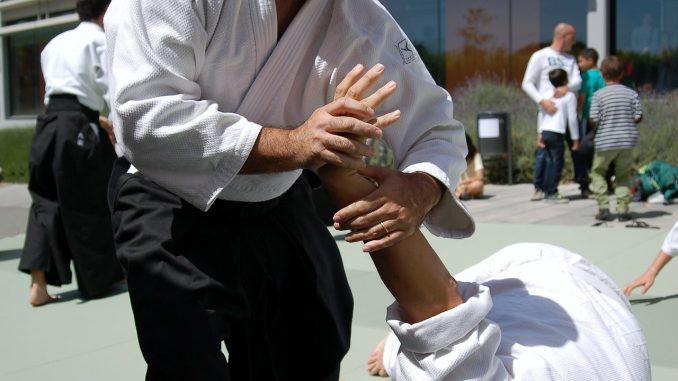
Since there are martial arts non using the shogo arrangement (or the korean equivalent), nosotros'll utilise the corresponding black chugalug caste as an approximation.
This means Japanese martial art 5th-degree black belt (錬士 – renshi) of at least two years can be considered low level master. In the same vein, Korean martial artists with a fourth-degree blackness belt (사범님 – sa bum nim) will exist used as an approximation for low level mastery.
How long does it have to primary a martial art? – (Korean fourth/Japanese fifth dan)
It takes at least xiii to 15 years.
| Organisation | Number of Years (bare minimum) |
|---|---|
| World Karate Organisation | xiii years |
| Japan Karate Association | 14 years |
| International TaeKwon-Do Clan | xv years |
| Chicago Aikido Gild | 8 years to get to 3rd dan (time for each level after that is non specified) |
Dorsum to the listing of five measures
Different Levels of Mastery

Low level masters
- Renshi championship
- Fifth-degree black chugalug of a Japanese martial fine art
- Fourth-degree black chugalug of a Korean martial art
- Analogous menkyo kaiden holders
Mid to high level masters
- Kyoshi title
- Hanshi title
- Menkyo Kaiden
- Acknowledged founder of a new way or headmaster of a new dojo
- Sixth-degree black belt and above (including 10th dan)
- Shihan honourific
The tables on mastery and specified data is based on the written report, 'A way to mastery. Mastery in martial arts', unless referenced otherwise.
Bottomline – How long does it take to master a martial art?
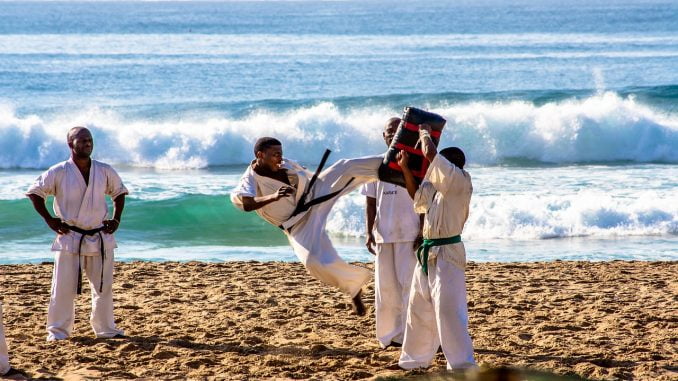
Instead of taking martial arts mastery as an abstract concept that cannot be measured, I assert that there are varying levels of mastery with guess measures. These, in summary, are…
Low level mastery: at least 12 years (lower range of Menkyo Kaiden) to 13 years (fourth dimension to get 5th-dan).
Mid to high level of mastery: 29 to 33 years of training (earlier establishing a respectable martial art manner)
Confirmed mastery (as in tenth-dan): Between 30 and 70 years of training
At present that you have a rough fourth dimension frame, do not confuse the measures for mastery itself. If you want your skills and understanding to click in at a higher level, continue training regularly… Going through the motions for decades (or irregular preparation) will not brand you a master.
Other articles in this series (including upcoming ones)
- How Long Does Information technology Take to Get a Black Belt
- How long does it take to learn a martial art? – Beginner Level
- Why And so Curious About How Long It Takes to Get a Black Belt?
- How to Go a Blackness Belt Fast? Speeding up Martial Arts Mastery (UPCOMING)
Source: https://www.wayofninja.com/how-long-does-it-take-to-master-a-martial-art/








0 Response to "How Long Does It Take to Master a Martial Arts"
Post a Comment